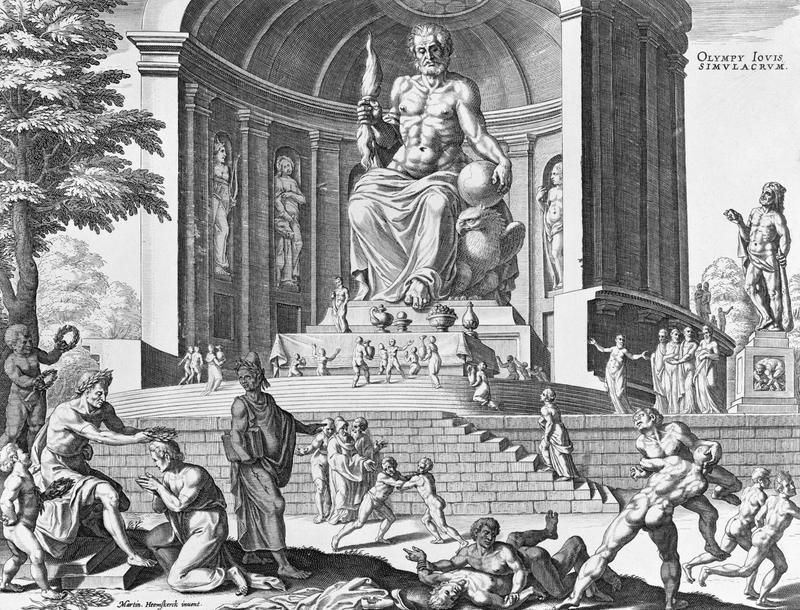The Seven Wonders of the Ancient World
By | October 30, 2018
Print of the Statue Of Zeus; Wonder Of The World
Ancient ruins and monuments around the world can be quite intriguing. What history do they hold from past civilizations and what can we hope to learn from them?

At some point in time during the 5th century, the statue of the Greek god, Zeus was either lost or destroyed, which is why there are very few true images of it. Built by sculptor, Phidias around 435 B.C., this wonder of the ancient world was made of gold, ivory and wood. It stood over 40 feet in height and was seated on a cedar throne. We find the details from ancient Greek descriptions and coins. Housed in its own temple, the Eleans, who built the temple, were also custodians of the Olympic Games.

This Great Pyramid was completed around 2560 B.C. and reached 481 feet. Having a smooth exterior, it is believed to have been built to honor the Pharaoh Khufu. It is the oldest, as well as the largest, of three pyramids in the Giza pyramid complex that borders El Giza, Egypt, and is the only one of the seven wonders still in existence today. For more than 3,000 years, this pyramid was the tallest man-made structure in the world. With three known chambers inside, the King and Queen chambers were higher up in the pyramid with a lower unfinished chamber. Other buildings in the complex included two mortuary temples and three smaller pyramids. The smaller pyramids were for the king’s wives – probably a smart idea to keep those wives separate from the Queen.


This wonder was constructed to celebrate Rhodes’ victory over the ruler of Cyprus and was built in the City of Rhodes. The statue was an erection of the Greek sun god, Helios and was 108 feet high. Collapsing in 226 B.C., due to an earthquake, it was considered to be the tallest statue of the ancient world. Ptolemy III was going to pay for it to be reconstructed, but the Rhodians were afraid that they had offended Helios, the sun god, so they turned down the offer. The destroyed statue lay on the ground for 800 years. One of its thumbs was larger than most statues. An Arab force captured Rhodes in 653 and a story was relayed that the statue was melted down and sold to a Jew, which could be a metaphor for Nebuchadnezzar’s dream about the destruction of a great statue.


Ephesus is one of Turkey’s cities, now in ruins, where the Apostle Paul and probably John the Baptist preached. This is the site where the temple of the goddess, Artemis (the goddess of hunting), once existed. The temple was actually destroyed three times, the first time was through a flood, the second time in 356 B.C. through arson by Herostratus, seeking a twisted form of fame and the last time by the Goths, an East German tribe, in a raid.

Built by Nebuchadnezzar for his Queen, the daughter of Cyaxeres, these gardens were 400 feet square on several tiers of arches, one over the other. Each one had a solid platform with terraces topped with flowers, shrubs and trees and even a garden on the roof. The gardens were watered from the reservoir from the river using hydraulic pumps. There were beautiful apartments underneath in the arches.
If we could personally visit these seven wonders of the ancient world, what an interesting vacation it would be – one we would not soon forget! Too bad we don’t have a time machine to travel back in time to see what they looked like in their original state of beauty.

